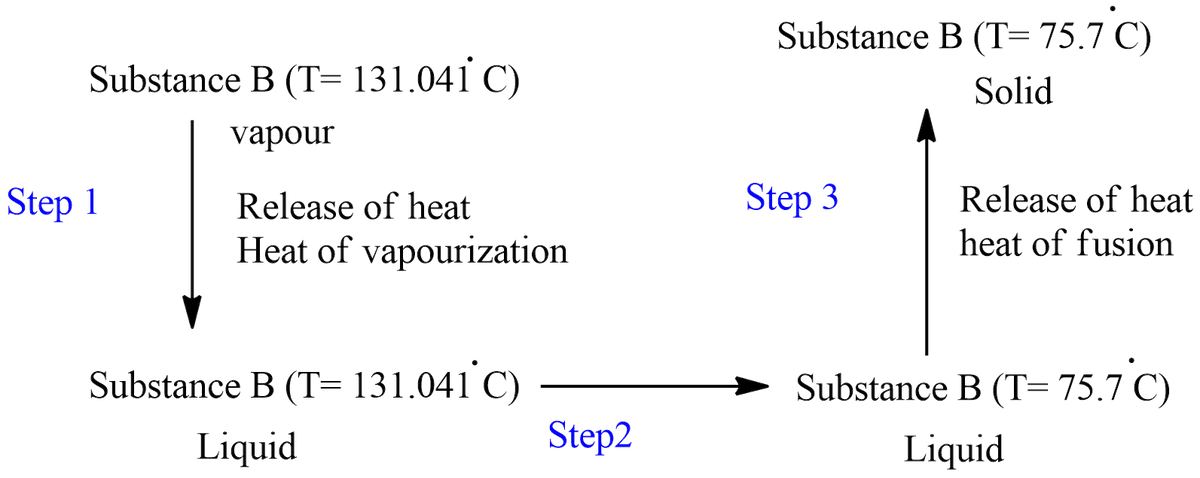Use the information provided to calculate the quantity of heat (in kJ) required to convert 70.8936 g of substance B from an initial temperature of 134.041ºC to a final temperature of 75.7ºC. Report your answer to the tenths place and do not include units. The molar mass of the substance is 30.84 g/mol. melting point of B = 8.734ºC heat of fusion = 7.96 kJ/mol boiling point of B = 112.7ºC heat of vaporization = 64.18 kJ/mol solid liquid gas specific heat (J/gºC) 2.258 4.768 6.743
Thermochemistry
Thermochemistry can be considered as a branch of thermodynamics that deals with the connections between warmth, work, and various types of energy, formed because of different synthetic and actual cycles. Thermochemistry describes the energy changes that occur as a result of reactions or chemical changes in a substance.
Exergonic Reaction
The term exergonic is derived from the Greek word in which ‘ergon’ means work and exergonic means ‘work outside’. Exergonic reactions releases work energy. Exergonic reactions are different from exothermic reactions, the one that releases only heat energy during the course of the reaction. So, exothermic reaction is one type of exergonic reaction. Exergonic reaction releases work energy in different forms like heat, light or sound. For example, a glow stick releases light making that an exergonic reaction and not an exothermic reaction since no heat is released. Even endothermic reactions at very high temperature are exergonic.
Use the information provided to calculate the quantity of heat (in kJ) required to convert 70.8936 g of substance B from an initial temperature of 134.041ºC to a final temperature of 75.7ºC. Report your answer to the tenths place and do not include units. The molar mass of the substance is 30.84 g/mol.
| melting point of B = 8.734ºC | heat of fusion = 7.96 kJ/mol | |
| boiling point of B = 112.7ºC | heat of vaporization = 64.18 kJ/mol |
| solid | liquid | gas | |
| specific heat (J/gºC) | 2.258 | 4.768 | 6.743 |
The schematic diagram of the phase transition is given below,

Step by step
Solved in 2 steps with 1 images









